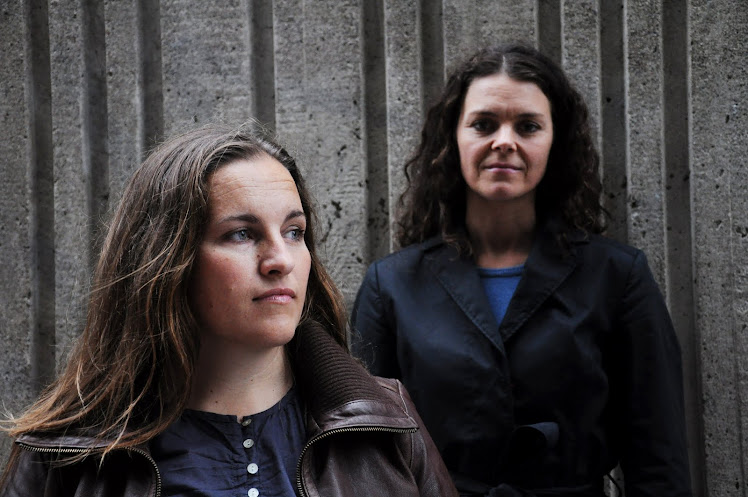The installation CLOSE is activated by the ones entering it. A concert of human voices and sounds arises depending on the actions of the audience. You will be part of a collective choreography, searching for individual voices within a vocal mine-field. Surrounding yourself with Palestinian female singers, journalists, shepherdesses, artists, mothers and students. Standing in their demonstration mob, on their stage, visiting their wedding. Listening to their screams, songs and words. CLOSE is about power and movement. Who's voice is heard? Do I own my voice? Where do I stand? With whom and how close? It is also about searching and finding. Listen carefully – the nuances of humans.
In CLOSE you will hear Palestinian women’s voices and environmental sounds recorded in Kawbar, Birzeit, Ramallah and Haifa in June 2009. Theses voices were recorded in cooperation with two Palestinian organizations; OWCA (Open work-shops for culture and arts) and WATC (Women's affairs technical commitee). It was shown for the first time in October 2009 at Khalil Sakakini Cultural Centre in Ramallah as a part of the art project "Outside the gallery - celebrating women in arts". That project resulted in a 20 m long art-mural devided between East Jerusalem and Ramallah. The sculpted mural was created by ten young Palestinian artists working with the themes of women's place in public space and female sexuality. CLOSE is an echo of this mural.
PRESS
"Värdigt och vackert", Mårten Arndtzén, Kulturnytt P1 101112
Uppsala Nya Tidning 100506
PRESS
"Värdigt och vackert", Mårten Arndtzén, Kulturnytt P1 101112
Uppsala Nya Tidning 100506
Exercise in Group Dynamics -
The Audience Collaborate in Close
Focus on Palestine. The choreographer Anna Källblad got a sms from the physician Mads Gilbert who was in Gaza during the ground invasion by Israel in January last year. He requested the world to do more and described the chaos and the violence. Together with singer Annette Taranto, Källblad decided, in the spirit of the Palestinian organization Open Workshop for Culture and Arts, to make a mural artwork of voices and bodies. That became Close, a dance performance in which the audience is a co-creator of the work.
On a carpet in a dimly lit room the audience walks around and listens. For every step the sounds are changed, the carpet is a minefield of short sound-sequences. In fifteen places there are more coherent sound pictures: fifteen Palestinian women have been allowed to say just what they want. It is song, prayers, laughters (all is translated in the program). So forget Robinson: Close is the real test of group dynamics because we are a group of people more or less unknown to each other, who takes on the task to create a work – where closeness and co-operation are the central parts. Forty minutes of reading signals: does one want to hear more of this particular part or does one break out of the group and search for a new sound – an action that the rest of the group has to adjust to. It is in one way congenial bearing in mind that the work is sprung out of a horrible conflict where co-operation would be desired.
And it is impossible to pass by that this is Palestinian women who have been allowed to record exactly what they want to say themselves, included things like “Mothers’ of Martyrs. Your sons are our sons.” What ever you hold is of the Israel and Palestine conflict, it is something one has to reflect over there on the carpet as one are searching for other voices – more nuanced, because in Close it is we, our bodies that give voice to sorrow, martyrhood, or questions. On the carpet exists some human life – also filled with longing, a dream sequence, laughing girls. And laughter in Arabic sounds exactly like laughter in Swedish, Finnish or Yiddish.
Astrid Claeson
Aftonbladet 091110
Tear the wall down - instead of letting it grow
Right there, in a room at the South theatre, thirty persons are walking around on a light rectangular carpet. At first one and one or in couples, listening to the abstract sound-scape streaming out from the loud-speakers. As if moving in an art exhibition, with interest but with distans. Soon though, the movement pattern changes - small crowds are created here and there, people standing unusually closely together. We start to walk in groups more deliberately and determinantly. First from one side of the carpet to the other and then to the centre. It feels like a dance. We stand on a line, we split up and cover the short side of the rectangle. As if we had something in common.
CLOSE is an art piece that, differently from most other so called social media art, demands not only participation but cooperation. The carpet is a vocal mine-field where fifteen voices are hidden, and only when we are sufficient in number and are standing closely enough together in a certain spot, we can hear them.
The Palestinian women's voices were recorded in Bir Zeit, Kawbar, Ramallah and Haifa this summer. They speak and sing in Arabic; prayers, demonstration calls, blessings, love poems, laugther. Fragments of the texts are translated on the map of the carpet, made by the artists Anna Källblad and Annette Taranto.
We move as a wall. And tonight CLOSE becomes a movement to help us remember that even though a wall fell twenty years ago another one is being built right now in Palestine.
Jenny Thunedal
Supported by Swedish Arts Council, The Swedish Arts Grants Committee, The Swedish Institute, City of Stockholm
Supported by Swedish Arts Council, The Swedish Arts Grants Committee, The Swedish Institute, City of Stockholm


